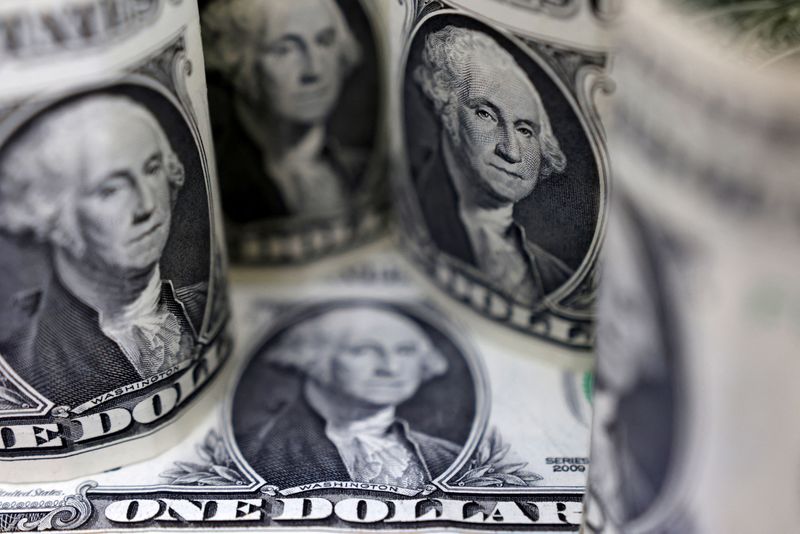Joby Aviation closes $591 million stock offering with full underwriter option
Investing.com - The U.S. dollar edged higher Tuesday, but remained in a tight range with traders wary ahead of the August 1 deadline for countries to avoid steep tariffs by signing trade deals with the U.S..
At 03:50 ET (07:50 GMT), the Dollar Index, which tracks the greenback against a basket of six other currencies, rose 0.1% to 97.675, having fallen 0.6% on Monday.
Dollar in tight range
Investors are looking for some progress in trade negotiations, in particular between the European Union and the U.S., two of the biggest trade blocs in the world, with just slightly more than a week to go before the August 1 deadline.
Uncertainty over the eventual state of tariffs globally has been a huge overhang for the foreign exchange market, leaving currencies trading in a tight range for the most part.
“The consensus view is probably that the dollar can lose more ground on a higher average U.S. tariff rate, but the euro’s ability to benefit from it may depend on whether the EU gets sucked into a major tit-for-tat escalation,” said analysts at ING, in a note.
The European bloc has been pushing for Washington to agree to maintain a baseline 10% duty, but this is reportedly facing U.S. opposition.
With this in mind, a growing number of European Union member states, including Germany, are considering using wide-ranging "anti-coercion" measures targeting U.S. services if the EU cannot reach a trade deal, Reuters reported, citing comments from EU diplomats.
Euro awaits ECB meeting
In Europe, EUR/USD fell 0.1% to 1.1689, with focus also on a rate decision by the European Central Bank later this week, as well as the trade negotiations.
The ECB is widely expected on Thursday to keep its key deposit rate steady at 2%, after cutting rates by 25 basis points in June.
It was the eighth reduction in a year, although it came with an indication from the ECB that it would likely pause in July, largely due to uncertainty around trade tensions with Washington.
“The euro’s ability to maintain preference over the dollar amid tariff tensions will depend on the extent of any escalation and whether the EU emerges as a relative loser while other countries secure significant deals with the U.S.,” said ING.
“We do not see sufficient bullish momentum to push EUR/USD back to the highs of early July (near 1.180), with 1.160 appearing a more appropriate anchor than 1.170, given the risks of further hawkish repricing by the Fed.”
GBP/USD dropped 0.1% to 1.3470, after the release of data showing that Britain borrowed more than expected in June.
Public sector net borrowing totalled £20.7 billion last month, higher than expected by Britain’s budget watchdog, the Office for Budget Responsibility, which forecast borrowing of £17.1 billion pounds in June when it published its outlook in March.
“That probably raises the chances even further of tax hikes this autumn, a prospect that can keep GBP upside capped,” said ING.
Political uncertainty in Japan
Elsewhere, USD/JPY climbed 0.3% higher to 147.87, given the heightened political uncertainty in Japan.
Prime Minister Shigeru Ishiba’s ruling Liberal Democratic Party lost its majority in Japan’s upper house in a weekend election, presenting more uncertainty over Japan’s political and economic outlook.
Ishiba now faces more challenges to his leadership, while the LDP will also face more hurdles in enacting its planned economic reforms.
AUD/USD slipped 0.3% to 0.6512, after the minutes of the Reserve Bank of Australia’s July meeting showed the central bank remained geared towards cutting interest rates further, although it was also cautious over the path of inflation and employment.
USD/CNY traded marginally lower to 7.1741, having shown little reaction to the People’s Bank leaving its benchmark loan prime rate unchanged on Monday.
The focus is now on a meeting of the country’s top governing body, the Politburo, which is set to take place later this month.
